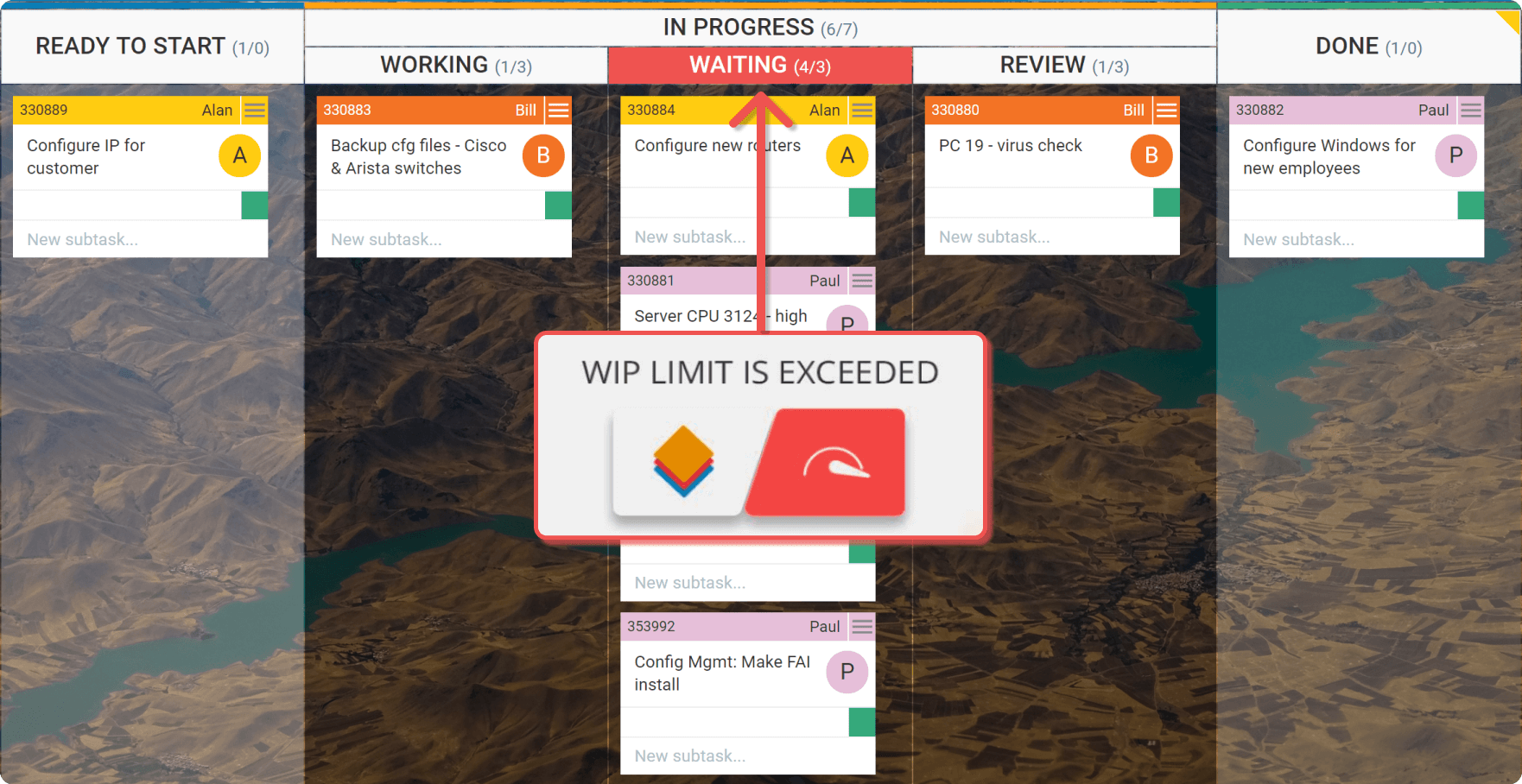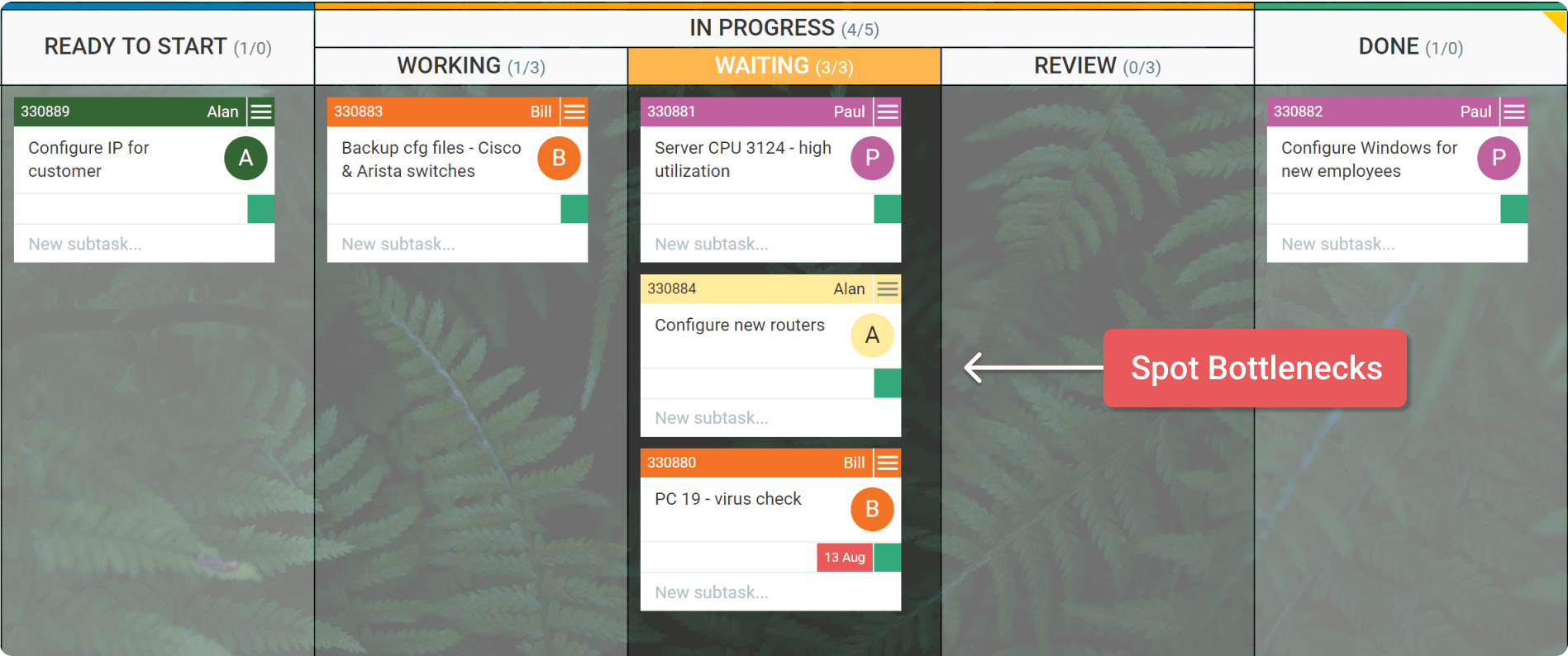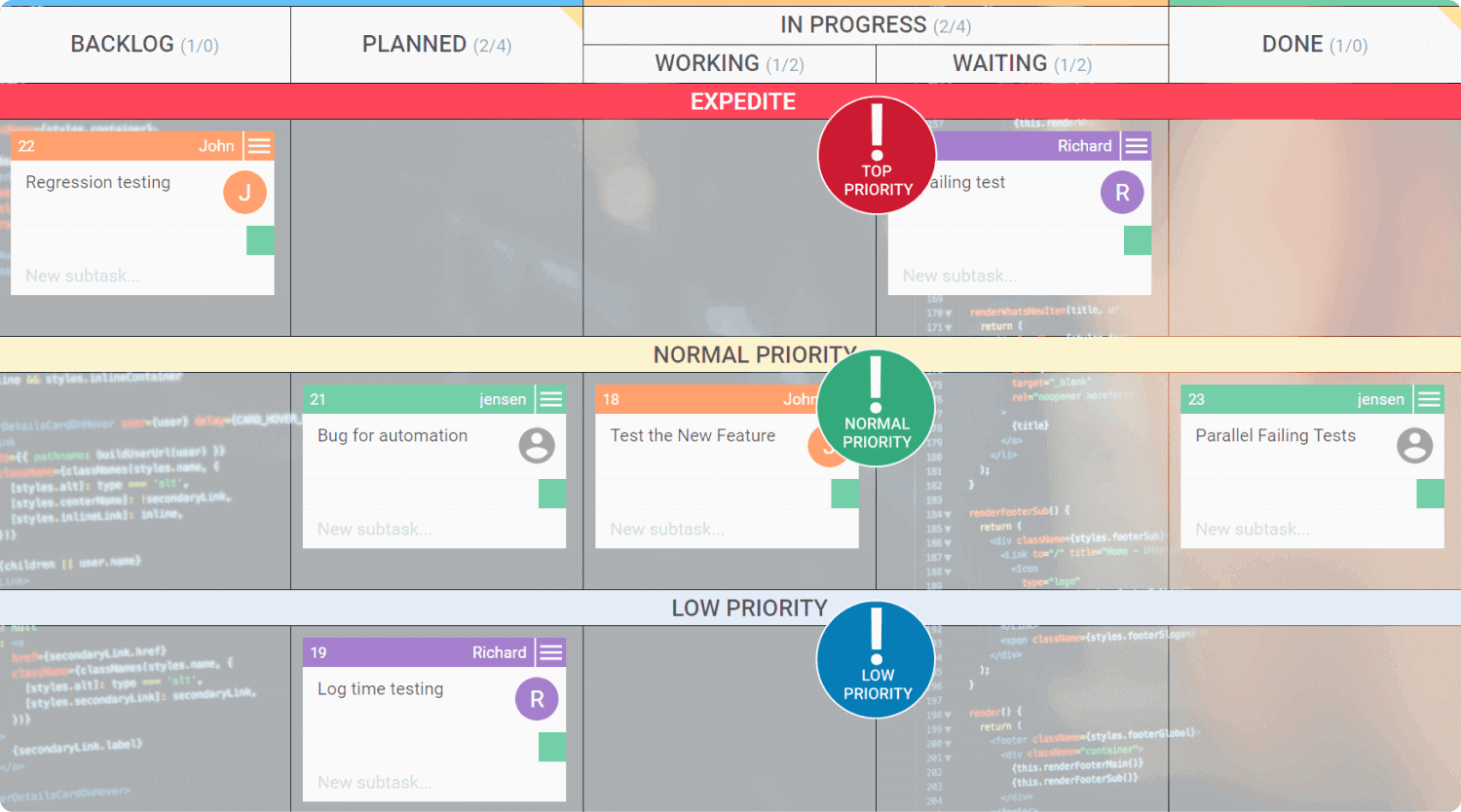“And what am I supposed to do with this?” I said, staring at my monitor. I was glaring at a digital board with some columns, workflows, cards, and some pretty colorful lanes.
“How cool!” I thought. Little did I know how this digital board was about to completely transform my perception of productivity, efficiency, and the importance of prioritization.
And you probably guessed it right. It was my first touch to a Kanban board, the first time to endured the benefits of Kanban. And I was fortunate enough to join Businessmap in a very exciting and empowering time when a small team of bright people was building their first MVP (minimum viable product).
You could feel the hype of startup culture – intense, rapid; everyone was crazy busy with launching and measuring new experiments and talking to the first customers. In such an ebullient culture, you need to learn new skills on the go. On this subject, my “appetizer” was learning to work the Kanban way with the leading software for Lean/Agile project portfolio management on the market, Businessmap.
Contrary to human expectation when they face something new, by the end of my first day I knew what an initiative is and how to create one, I knew how to create cards, how to link them, and how to obey the WIP rule, all taught by myself. Back then, the WIP limit was the hardest part for me to understand (not the concept itself but why).
So, why?
Because in my mind, to be a multitasker was a must skill. Multitasking, as a skill, took the top spot on my LinkedIn headline. In my eyes, it was a nugget. This is what the majority of businesses require from their future-to-be employees, and this is what you put on your CV.
“I am great at multitasking” until I faced the WIP limit.
Lesson #1: RIP Multitasking, Welcome WIP
The benefits of Kanban are various, however, managing WIP was the first that hit me. Limiting work in progress (WIP) is one of the 6 practices of Kanban.
Switching focus from one task to another will generally harm the process. This will inevitably cause multitasking - a sure path to generating waste and inefficiency.
Multi-tasking is a counterproductive activity, and people who think they can split their attention between many tasks at once are definitely not getting much more done.
Multitasking is not even a possible command for the brain. What actually the brain does is “task switching,” and it comes at a cost.
Lesson #2: Mind the Waste You Create
The cost is called waste. What is waste?
“In Lean, waste is any activity that consumes resources but brings no value to the end customer.”
In our case of the multitasker, our waste is time. We will lose time if we perpetually switch between tasks without finishing any of them. The lost time has no value for us because we’ve wasted hours on nonproductive activities.
“Finish before you start,” the lean mahatma would say. Don’t pull another card unless you are finished with the one in progress. But if we use the right system, waste can be substantially reduced.
Lesson #3: Learn to Pull (before You Push)
The third benefit of Kanban that I’ve learned is the existence of and the difference between pull and push systems. The pulling system is far more efficient, as a major advantage over the push system is the ability to reduce the waste of any process. In the case of the multitasker, we reduce the time wasted between switching unfinished tasks.
How do we waste time, you may ask? Neurologically, the brain will need some time to restore and put into action the information related to the previous task we have worked on but didn’t finish (we didn’t finish it because we switched to another task in progress).
Note: There is a scenario when you are blocked by a third party, and you cannot proceed with the current task. It’s OK to start working on another task. However, it is important to indicate that your work on that particular card (task) is blocked due to some reason. In the beginning, I used to skip this step, and very often, I would exceed my board WIP limits, asking the WIP to be increased. Oh, no.
Lesson #4: If the Kanban Board Is the Sea, Bottleneck Is the Red Flag
Visualize work so you can detect bottlenecks. Bottlenecks? Yes. Here is the simplest definition:
“A process bottleneck is a work stage that gets more work requests than it can process at its maximum throughput capacity. That causes an interruption to the flow of work and delays across the production process.”
This is how I understood that something was not right with my work in progress. It was very easy for me to detect that in one particular column, I had 4 cards in a queue. It is critical not to increase the WIP limit, but to find the source of the bottleneck.
Are you blocked by colleagues, by corporate processes, or by third parties? What can you do to eliminate this bottleneck?
My advice is to step in, take the lead, and figure out yourself. I have always found fascinating the Lean philosophy for continuous self-development, also known as Kaizen. The fourth principle of Kanban is to encourage acts of leadership at all levels. It’s a great tool for personal development and growth.
Lesson #5: Prioritize Now!
Do you know how you get more things done of the right things that need to be done?
Chiefly, you will need to:
1) eliminate procrastination
through
2) work prioritization
Easily said, but how do you put this in practice? Let’s dive a bit in some neurology:
Usually, we are more productive in the morning (if we consider the norm that you sleep through the night and work during daylight). There are mainly two reasons for this. Naturally, when we wake up, our cortisol levels are at its peak (if we consider a healthy individual).
Cortisol is needed for the production of adrenaline (increases the conversion of noradrenaline to adrenaline). Adrenaline is the neurotransmitter that prepares the brain for the so-called “fight or flight” mode, the arousal of our brain, muscles, and reactions. Our brain and body are ready for stress during the day, and they have the mechanism (adrenaline) to cope with it.
What all this means for fighting procrastination is that the best time to start the tasks with the biggest impact on our work is first thing in the morning. If you leave the tasks for the “early evening,” you will most probably skip them again. Our cortisol has dropped by the evening, and adrenaline and dopamine too. The brain is tired, and it is preparing for recovery by “shutting down.”
So if we prioritize the most important work first thing in the morning, then we will most probably reduce the level of procrastination.
And this has happened to me. I was a procrastinator, but the idea of “getting more done of the right things” to which I was exposed, made me rethink and re-evaluate the importance of work prioritization.
Work, which has an impact today, cannot be procrastinated for tomorrow.
Lesson #6: Read the Same Book, Page, and Paragraph Altogether
Everyone on the team should be on the same page regarding the project you are working together. One of my favorite benefit of Kanban is that it encourages feedback loops and team collaboration. Folds will only get smoother if you let transparency grow within your team culture. This is easily achieved with a daily stand-up meeting where the whole team shares its progress. This is the time when you can share your struggles and ask for an opinion from your colleagues and your team leader.
Personally, in the beginning, I was a little bit afraid to express my thoughts transparently on these stand-up meetings. Sometimes, you will confront a colleague on a particular problem, and if you are not accustomed to honest and direct discussions, then you may feel uncomfortable speaking up yourself.
With time, this approach builds a strong team. Take it like this. The members who are not well-suited for your team’s vision will most probably leave, and what’s left is the concrete for your product.
My biggest takeaway from this lesson is personal. Ever since I’ve introduced full transparency into my personal relationships, I’ve managed to be more direct in my conversations. I’ve learned that those who cherish your personality will stay no matter how honest you are with them during discussions.
Lesson #7: I Will Outperform You Through Agility and Adaptability
This is probably the most valuable, habit-changing lesson that Kanban taught me. Productivity is directly related to the fact of how flexible and agile you can be in the busy society we live in. How much of the important things you can complete today depends on your agility, and your skills to adapt to changes rapidly.
Imagine how you can take and apply the basic Kanban principles to any work-related area, to any aspect of your personal and family life. Yes, not everything in life should be treated as a checklist or as a task (although it helps :)). But imagine how less chaotic and complicated our day-to-day life could be. Imagine living with less stress and having more time for family and hobbies while completing even more.
Productivity is not equal to being a workaholic. Planning work and having processes don’t mean less fun. Having a long-term vision for your company’s continuous improvement or personal growth doesn’t mean that you will endure less exciting events.
At the end of the day, the main benefit of using Kanban is that it doesn’t require revolutionary changes as it respects the current state of your organization. It suggests that you should pursue incremental change and try to improve continuously.
And this is a doable philosophy for life.

Mila Chervenkova
Marketing Expert | Agile, Kanban & OKR Practitioner
Mila is a seasoned marketing professional with a rich background in product marketing, content creation, and website optimization. Years of Practicing Kanban, Agile, and OKR practices have made her an expert in creating powerful productivity habits.






